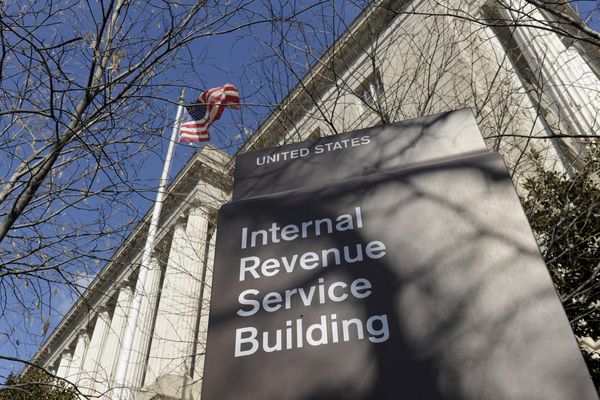
With resilient and inelastic demand for groceries and other household items, the prospects of the grocery industry appear promising. The sector’s expansion is further driven by the rising disposable incomes of consumers and the growing popularity of online grocery services amid consumer preferences for comfort and convenience.
Given the industry’s robust outlook, it could be wise to invest in fundamentally sound grocery stock Target Corporation (TGT). However, it appears wise to wait for a better entry point in Costco Wholesale Corporation (COST).
The grocery sector continues to thrive due to rising consumer income levels, rapid e-commerce expansion, and its inelastic nature, which highlighted the resilience of demand for essential goods despite the economic uncertainties and turmoil faced in the past two years. Dropping inflation levels and a strong labor market have further boosted the market’s prospects.
Some of the opportunities that strengthen the grocery retail industry’s 2024 outlook include increasing loyalty programs, enhancing omni experience through in-store investments, and individual engagement through the application of AI and other cutting-edge technologies.
The global grocery retail market is expected to reach up to $14.77 trillion by 2031, witnessing a CAGR of 6.9% during the forecast period (2024-2031). Rapid population growth, evolving consumer preferences toward healthier, organic, and sustainable products, innovation in product offerings, and technology integration are the key factors influencing the market’s growth.
Meanwhile, the U.S. online grocery market is anticipated to grow at a CAGR of 9.31% from 2024 to 2030, resulting in a market volume of $59.94 billion by 2030. Shifts in consumer behavior, accelerated by the COVID-19 pandemic, led to an increased acceptance and adoption of online shopping.
Advanced data analytics and AI technologies also enable online grocery platforms to personalize recommendations based on customer preferences, purchase history, and dietary restrictions.
Considering these favorable market trends, let’s discuss the fundamentals of two Grocery/Big Box Retailers stocks, starting with the second choice.
Stock to Hold:
Stock #2: Costco Wholesale Corporation (COST)
COST engages in the operations of membership warehouses worldwide. It offers branded and private-label products in a wide range of merchandise categories. The company provides merchandise, like sundries, dry groceries, candies, coolers, freezers, deli, liquor, and tobacco; electronics; health and beauty aids; and garden and patio products.
On January 18, 2024, COST announced that its board of directors declared a quarterly cash dividend on the company’s common stock of $1.02 per share. The quarterly dividend was paid on February 16, 2024, to shareholders of record at the close of business on February 2, 2024.
COST pays an annual dividend of $4.08, which translates to a yield of 0.56% at the current share price. Its four-year average dividend yield is 1.49%. Moreover, the company’s dividend payouts have increased at a CAGR of 13.4% over the past three years. Costco has raised its dividends for 19 consecutive years.
In terms of forward EV/Sales, COST is trading at 1.27x, 25.4% lower than the industry average of 1.71x. However, the stock’s forward non-GAAP P/E and Price/Book multiples of 46.07 and 14 are significantly higher than the respective industry averages of 17.79 and 3.06.
COST’s trailing-12-month gross profit margin of 12.55% is 62.9% lower than the industry average of 33.85%. Also, its trailing-12-month EBITDA margin of 4.45% is 61.9% lower than the industry average of 11.68%. The stock’s trailing-12-month net income margin of 2.73% compared unfavorably to the 4.96% industry average.
COST’s revenue and EBITDA have grown at respective CAGRs of 11.7% and 13.4% over the past three years. The company’s EBIT has increased 14.8% over the same timeframe, while its net income and EPS have improved at CAGRs of 16.1% and 16%, respectively.
For the second quarter that ended February 18, 2024, COST’s total revenue increased 5.7% year-over-year to $58.44 billion. Its income before income taxes grew 12.8% from the year-ago value to $2.24 billion. The company’s net income came in at $1.74 billion and $3.92 per common share, up 18.9% and 18.8% from the prior year’s quarter, respectively.
However, the company’s cash and cash equivalents decreased from $13.70 billion as of September 3, 2023, to $9.09 billion as of February 18, 2024.
Analysts expect COST’s revenue and EPS for the third quarter (ending May 2024) to increase 7.4% and 24.9% year-over-year to $57.64 billion and $3.66, respectively.
COST’s stock has gained 32.7% over the past six months to close the last trading session at $732.17. However, over the past five days, the stock has declined marginally.
COST’s mixed outlook is reflected in its POWR Ratings. The stock has an overall rating of C, which translates to a Neutral in our proprietary rating system. The POWR Ratings are calculated by considering 118 different factors, each weighted to an optimal degree.
The stock has a C grade for Growth, Value, and Quality. Within the A-rated Grocery/Big Box Retailers industry, COST is ranked #28 out of 37 stocks.
Click here to access additional ratings of COST (Momentum, Sentiment, and Stability).
Stock to Buy:
Stock #1: Target Corporation (TGT)
TGT operates as a general merchandise retailer. It provides apparel for women, men, boys, girls, toddlers, and newborns, along with jewelry, accessories, shoes, beauty and personal care, paper products, and pet supplies. The company also provides dry grocery, dairy, frozen food, beverages, and food service; and electronics, furniture, and more.
On March 13, 2024, TGT declared a quarterly dividend of $1.10 per common share. The quarterly dividend is payable June 10, 2024, to shareholders of record at the close of business on May 15, 2024.
The company pays an annual dividend of $4.40, which translates to a yield of 2.62% at the current share price. Its four-year average dividend yield is 2.16%. Moreover, the company’s dividend payouts have increased at a CAGR of 17.5% over the past three years. TGT has raised its dividends for 55 consecutive years.
On February 15, TGT introduced its new low-price owned brand, dealworthy, created to offer consumers incredible value on over 400 everyday basics. With deal-worthy, TGT is facilitating more options at lower prices, starting at less than $1. The new brand will strengthen TGT’s portfolio, backed by TGT's owned brand one-year return policy and will expand its operations.
In terms of forward non-GAAP PEG, TGT is trading at 1.38x, 38.1% lower than the industry average of 2.23x. Likewise, the stock’s forward EV/Sales multiple of 0.87 is 48.8% lower than the industry average of 1.71. Similarly, its forward Price/Sales of 0.72x is 40.9% lower than the industry average of 1.23x.
TGT’s revenue has grown at a CAGR of 4.7% over the past three years. The company’s total assets have improved at a CAGR of 2.6%.
In the fourth quarter that ended on February 3, 2024, TGT’s total revenue increased 1.7% year-over-year to $31.92 billion. Its operating income grew 60.9% from the year-ago value to $1.86 billion. The company’s EBITDA of $2.62 billion indicates growth of 40.3% year-over-year. The company’s adjusted EPS came in at $2.98, up 57.6% from the prior year’s quarter.
Furthermore, the company’s cash and cash equivalents stood at $3.80 billion as of February 3, 2024, versus $2.23 billion as of January 28, 2023.
As per the company guidance for the first quarter of 2024, TGT expects adjusted EPS to range from $1.70 to $2.10. For the full year, the company expects a modest increase in comparable sales in a range from flat to 2%, and its adjusted EPS is expected to range from $8.60 to $9.60.
Street expects TGT’s revenue to increase 2.3% year-over-year to $24.52 billion for the second quarter (ending July 2024). For the same period, the company’s EPS is expected to grow 22.3% year-over-year to $2.20. Moreover, the company surpassed the consensus EPS estimates in each of the trailing four quarters, which is remarkable.
Over the past month, the stock has gained 11.2% and 40% over the past six months to close the last trading session at $168.21.
TGT’s bright prospects are reflected in its POWR Ratings. The stock has an overall grade of B, translating to a Buy in our proprietary rating system.
TGT has a B grade for Sentiment, Value, Quality, and Momentum. It is ranked #13 among 37 stocks within the A-rated Grocery/Big Box Retailers industry.
To see the other ratings of TGT for Growth and Stability, click here.
What To Do Next?
Discover 10 widely held stocks that our proprietary model shows have tremendous downside potential. Please make sure none of these “death trap” stocks are lurking in your portfolio:
COST shares fell $1.92 (-0.26%) in premarket trading Wednesday. Year-to-date, COST has gained 11.06%, versus a 8.78% rise in the benchmark S&P 500 index during the same period.
About the Author: Mangeet Kaur Bouns

Mangeet’s keen interest in the stock market led her to become an investment researcher and financial journalist. Using her fundamental approach to analyzing stocks, Mangeet’s looks to help retail investors understand the underlying factors before making investment decisions.
Should You Buy, Hold, or Sell Target (TGT) and Costco (COST) in the Grocery Sector? StockNews.com






